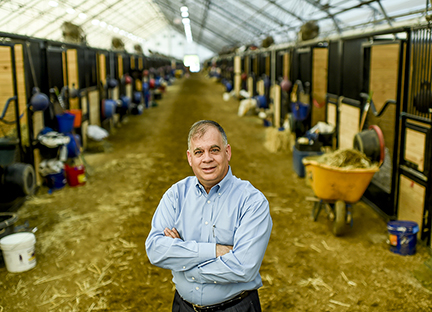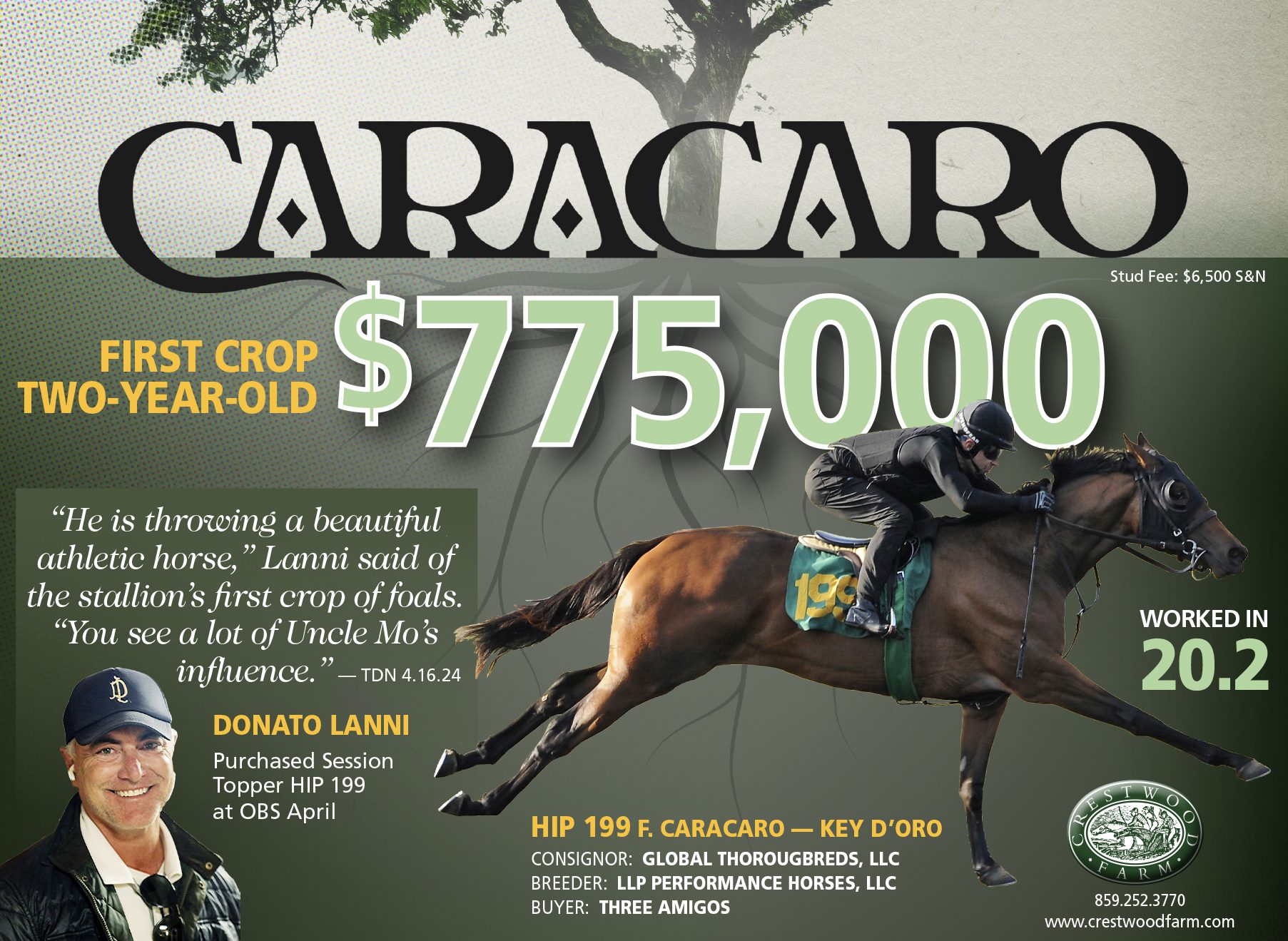By Bill Finley
When a racetrack sits on property that is likely worth hundreds of millions of dollars and is not making any money with its core business, that's a problem. When does someone say it no longer makes sense to continue to race when there's a windfall profit to be made on developing the real estate?
That's exactly the scenario Stronach Group Chief Operating officer Tim Ritvo is facing at Santa Anita and why he is determined to turn things around at the “Great Race Place.” Ritvo has helped transform Gulfstream and Laurel, two other Stronach tracks, into two of the greatest success stories in the sport, and wants to do the same at Santa Anita. He's confident he can but is also realistic about the economics involved. That's why he is so intent on showing significant gains in handle at the meet that began Dec. 26. He knows that if Santa Anita does not do better there are no guarantees that there won't be a day when it closes its doors and is razed by developers.
“Out here in California things have kind of flat lined over the last five years,” he said. “As we continue to lose market share on the product it's come a time where we really have to take a look at things and we have to figure out a formula to grow our business. That's not a threat. What we're basically saying is we need to turn it around. One of Mr. Stronach's biggest initiatives while he is here is to try to get racing healthy so that when he is gone racing can continue on in perpetuity. To do that, we positively have to change the trajectory of the handle and the awareness of the California product. There's no question that California racing should be one of the leaders in the United States, if not the leader.”
Ritvo said there have been no discussions about ever closing Santa Anita and he is sure it will not happen in Stronach's lifetime. But Stronach is 85 and there will come a day when someone else is in charge. Will that person or company keep Santa Anita open as a racetrack? Unless racing there can become a profitable venture, the answer is probably not.
“The only way to ensure the future of racing, whether it's here or at any racetrack, is to make sure that racetracks are financially viable,” Ritvo said. “If for some reason if Frank or Belinda Stronach or the grandkids some day do not want to own a racetrack, would somebody buy Santa Anita as a racetrack because the return on investment makes sense? Only if there is some sort of positive financial return. Good things don't last forever on charity. You have to be able to be a financially stable company. So what I am saying is that to have the 'Great Race Place' here forever it has to make sense because sooner or later when it doesn't make sense someone will develop the land. Mr. Stronach would never develop this property. He loves horse racing and has a passion for it, but as time goes on and future generations start looking at this place they may want to sell it because they don't get a big enough return on their investment. Other people could come in and look at it as a business venture and if doesn't return enough as a race track all of a sudden it becomes a real estate project, like Bay Meadows, like Hollywood Park.”
Ritvo was sent to Santa Anita last September by Stronach with instructions to turn Santa Anita's fortunes around. He spent the first few months acquainting himself with the business and the people who were running it and has said he feels this meet, which runs through July 4, will be the true litmus test. Because he feels positive business trends are so important he has called this the most important meet in the track's 83-year history.
Ritvo's play book is well known. He puts the customer above all others and believes the players demand a certain type of product, cards that are heavy on full fields and grass racing. He does not mind running lower level races if they continually draw big fields.
“The economic engine is the customer and we have to deliver a product that they're willing to bet on, and that product is not a five-horse field with a 1-9 shot,” Ritvo said. “People need to watch more and bet more on the racing here. California is full of quality. It has a ton of quality and a rich history of great races. At the same time, we need more quantity. We need more claiming races. Claiming racing are what drives the racing day in and day out. When you are looking at 122 days of racing, it is not a boutique meet or even a 30-day, 60-day meet where you can have the greatest horses go nuts for 30, 60 days. When you run these elongated meets you need some quantity product. That doesn't mean cheapening up what we already have. What we have is great and none of that should go away. Some times we get knocked at Gulfstream by people saying we've cheapened up the product. But if you look at Gulfstream all the great stakes race are still there. With some the purses are higher than ever. What we did was we filled in those spots with a lot of other stuff that gave people more multiple betting options and as a result we've seen the parimutuel handle grow.”
With or without cards that include more claiming races, Ritvo knows that he needs more horses based in Southern California and he needs local trainers to race their horses more often. Santa Anita is planning on building new barns that will accommodate between 600 and 800 additional horses. Ritvo said he'd like to see them filled by new outfits and preferably not by the “super” trainers that might have 200 horses under their care and sometimes believe it's in their best interests to race a horse as little as possible.
“We don't have a horse shortage, we have an owner shortage,” he said. “We can start breeding horses and in a couple of years we can have 10,000 extra horses in circulation. But we don't have enough owners to buy up or breed those horses and the reason the owners are disappearing is because the horses run three times a year and the owner has no chance of making any money versus years ago when a horse could run 15 times a year or at least once a month. There have been lot of changes in the game through the years. The winning percentage next to the trainer's name means a lot. Owners won't go to guys that win 12 or 15 percent. These super trainers come up with a 30 percent win percentage, but they'll have 40 2-year-olds in the barn and they'll only run the ones that are absolutely perfect and ready to run. That's a huge issue and something we have to deal with.”
Santa Anita isn't going anywhere any time soon. But Ritvo wants to make sure it's running 10 years from, 25 years from now. That's his mission, and he's wasting no time getting started.
Not a subscriber? Click here to sign up for the daily PDF or alerts.






